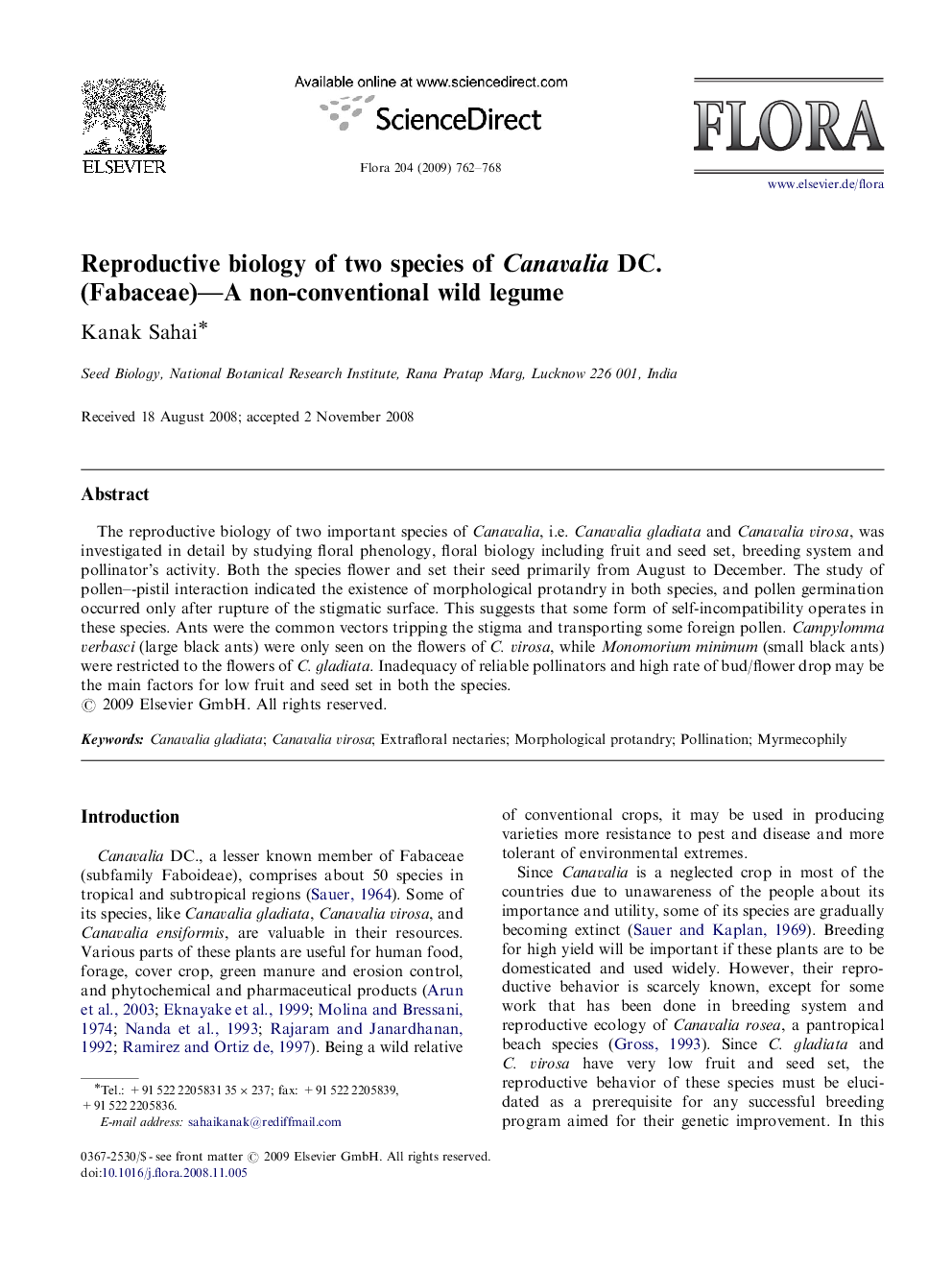| Article ID | Journal | Published Year | Pages | File Type |
|---|---|---|---|---|
| 2179993 | Flora - Morphology, Distribution, Functional Ecology of Plants | 2009 | 7 Pages |
The reproductive biology of two important species of Canavalia, i.e. Canavalia gladiata and Canavalia virosa, was investigated in detail by studying floral phenology, floral biology including fruit and seed set, breeding system and pollinator's activity. Both the species flower and set their seed primarily from August to December. The study of pollen–-pistil interaction indicated the existence of morphological protandry in both species, and pollen germination occurred only after rupture of the stigmatic surface. This suggests that some form of self-incompatibility operates in these species. Ants were the common vectors tripping the stigma and transporting some foreign pollen. Campylomma verbasci (large black ants) were only seen on the flowers of C. virosa, while Monomorium minimum (small black ants) were restricted to the flowers of C. gladiata. Inadequacy of reliable pollinators and high rate of bud/flower drop may be the main factors for low fruit and seed set in both the species.
